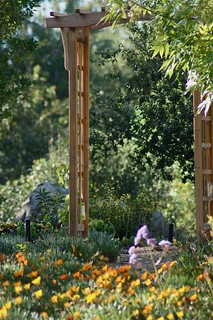This week for our How I Write series, my accountability group was asked, “What’s your current biggest obstacle to success? Name at least 3 things you can do improve your chances of overcoming obstacles.”
Ok, lemme ‘fess up here. I posed this question this week to my accountability group. And you know what sucks? This question sounded good in my head. It even looked good on the forum where my accountability group meets. However, when I realized I had to answer it too… it suddenly looked a lot more daunting. So forgive me, while I try to do this justice. I know it’s something I need to force myself to look at closely, answer honestly and use to build a game plan.
I’ve been skating by on minimal effort and making far too many excuses lately. And honestly, I’m not sure I can answer this with just one thing. I could point my finger in a number of directions: drive, follow-through, time management — hell, even blaming disruptions of my writing schedule on the people around me, but that one would mostly be a lie I tell myself to feel better. I still have the house to myself most days from around 9 am until noon or so, and I’ve failed to make the most of those hours.
I could also point to the many things I know are NOT obstacles. I can string a sentence together. I can even put together some workable paragraphs that read smoothly. I’ve been told I have a good historical voice. However, some spark is missing between me and the page. The ideas in my head aren’t translating properly. I get feedback that asks if I was going for a certain effect until I want to bash my head against the wall, because… Yes. Yes, that’s EXACTLY what I was trying to do. Only apparently, I didn’t quite.
So what’s my obstacle? Me. Sounds too easy right?
Lemme break it down by tackling three things I need to do in order to up my game and get past this hurdle.
First, and I’ve done this to some degree, but publicly own up to the idea that I am a professional writer. I just haven’t gotten paid for it. But in order to do so… I need to put in my hours and do the work. Nothing is going to write itself. To this end I’m renewing my commitment to use a time tracker on my iPad to make sure I log a minimum of 500 hours this calendar year toward justifying this as a business and not a hobby.
Second, I can’t let my head get in this place where nothing I do is any good. I’ve gotten fabulous feedback in some areas. I just need to work harder and improve the others. How exactly I’m going to accomplish this one? Yeah, I’m not sure either. I know what I can do toward this end is to take the valuable feedback I’ve gotten so far this year, and see if I can tease it apart from the exact manuscript, figure out how to make that work in general and then apply it back to the manuscripts in progress.
Third, I’m going to the RWA National Convention next week. This is part of the first step in treating what I’m doing more seriously, but also a great way to talk shop with experienced writers, take some workshops in some areas to get ideas on how to address the craft issues I’m having and also forcing myself out of my comfort zone and embracing that this is something I want to seriously pursue.
I think that last bit there is probably the most important piece of this post. “This is something I want to seriously pursue.” Pursue, not just allow to happen, not react to it happening around me, but to actively go out there after it, which I believe to be a very important piece of the puzzle when you’re looking at overcoming obstacles of any sort.
And if you’d like to read about the rest of my accountability group’s plans for overcoming obstacles, you can find their blogs here:
* Alexia Reed * Kimberly Farris * Danie Ford * Emma G. Delaney
















